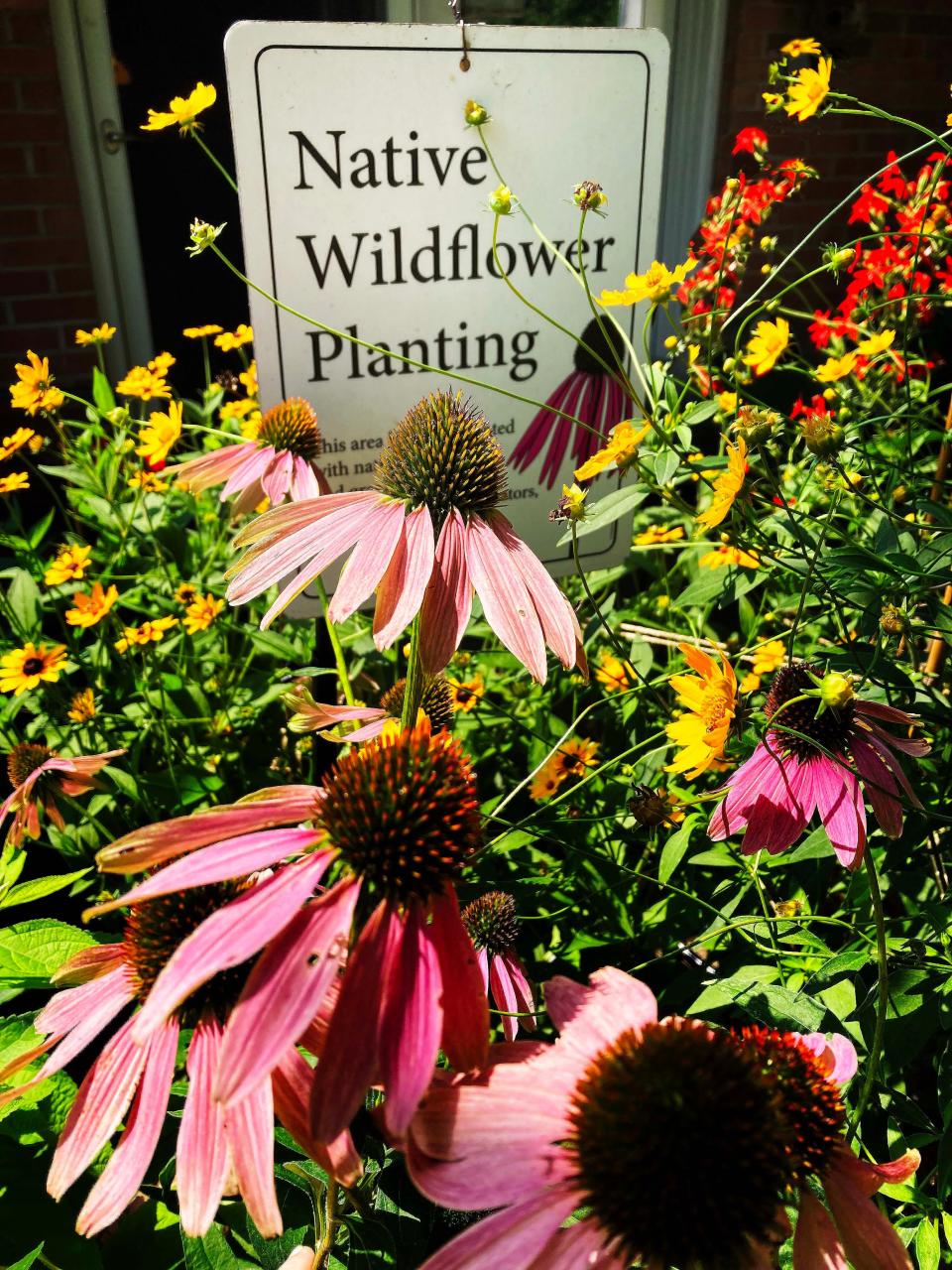Sorenson: Changes to Evansville 'weed ordinance' will benefit nature
Gone are the citations and fines previously leveled against Evansville residents who chose to enhance the environment and support wildlife by landscaping with native plants.
In a unanimous decision July 8, the City Council adopted changes to the so-called “weed ordinance” that once prohibited vegetation more than nine inches tall.
Given the sweeping national movement to plant native, many citizens felt the amendments were long past due. Indianapolis, Fort Wayne, Bloomington, Louisville and other regional municipalities adopted revised language to their weed ordinances earlier. In fact, those city ordinances gave guidance to local authorities, with Louisville’s regulations coming to the forefront for the simple, straight-forward language. Now, tall native plants are legal in urban yards in managed natural landscapes.
So, just exactly what does the amendment allow − and not allow?
In a nutshell, managed natural landscapes made up of native plants are exempt from the nine-inch rule. According to the amendment’s language, “’Managed Natural Landscape' refers to an intentional and maintained area of Indiana native plants, including those that have gone to seed. Managed Natural Landscapes improve environmental quality, habitat for wildlife, and watershed health.”
But what’s native? The amendment’s language states that “‘Indiana native plants’ are defined as any plant species that existed prior to the arrival of settlers within the state of Indiana.”

Key to the amendment is also the clarification that “Managed Natural Landscapes shall not include turf-grass lawns left unattended.” The regulation negates the argument that some folks use that they will just quit mowing the lawn to let it return to nature. Nothing about turf is native.
In addition, weeds and rank vegetation that crop up in untended turf as well as invasive vegetation anywhere are also unacceptable.
Such plants include species like amur honeysuckle, Asian bittersweet, bull thistle, common teasel, crown vetch, English ivy, Japanese barberry, Japanese honeysuckle, multiflora rose, purple loosestrife, sweet autumn clematis, periwinkle, wintercreeper and some 115 others.
For a complete list of invasive and prohibited plant species as well as regulatory status as defined by the Indiana Department of Natural Resources and US Department of Agriculture, visit entm.purdue.edu/iisc/invasiveplants.html.
The amendment also prescribes a few simple steps to clarify “managed.” Regulations require that “the area (of native plantings) must be clearly defined by edging, fencing or landscaping material. A native planting that directly abuts at least two feet of mowed and maintained turf grass will be considered to have adequate edging.”
Further, “the area of plant growth must not extend into the public right of way.”
And from personal experience, I can salute the final recommendation: “A sign is recommended to be posted on the property in a location likely to be seen by the public advising that native plants are being established.”
Not only does the signage clarify managed natural landscaping to the weed patrol, but it also reminds passers-by why so many butterflies and birds flit through the plantings.
As the weed ordinance task force, Edith Hardcastle, Tim Thompson and Megan Ritterskamp worked closely with the Southwest Chapter Indiana Native Plant Society, City Council, and the Building Commission to create this amended ordinance that redefines “weed” so that everyone can grow native plants to benefit pollinators and birds. Special thanks to Zachary Heronemus and Mary Allen for sponsoring the change.
For more information about birds and bird habitat, see Sharon Sorenson’s books How Birds Behave, Birds in the Yard Month by Month, and Planting Native to Attract Birds to Your Yard. Follow daily bird activity on Facebook at SharonSorensonBirdLady, or email her at chshsoren@gmail.com.
This article originally appeared on Evansville Courier & Press: Sorenson: Changes to Evansville 'weed ordinance' will benefit nature

